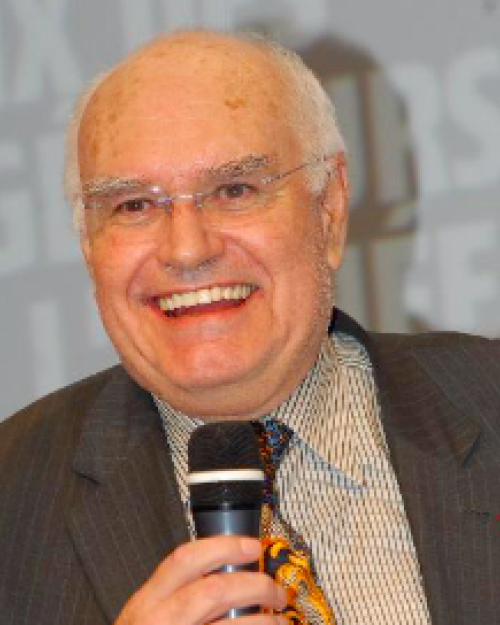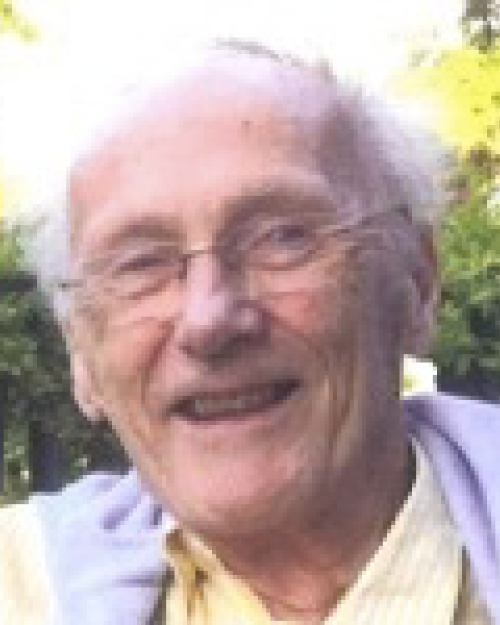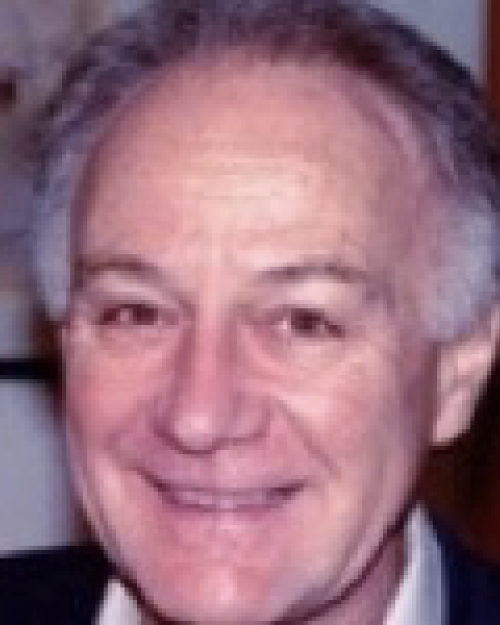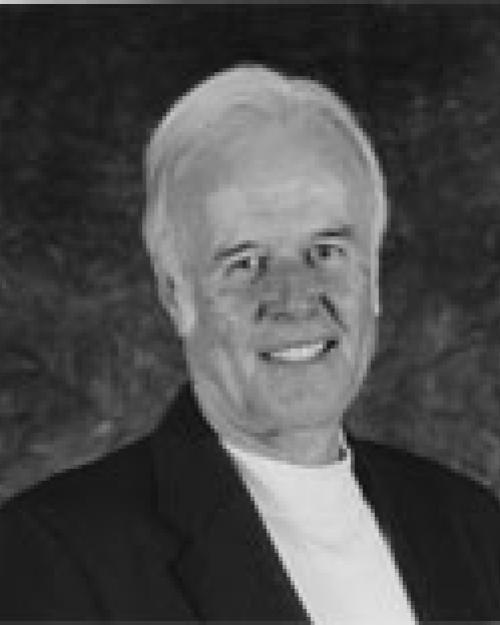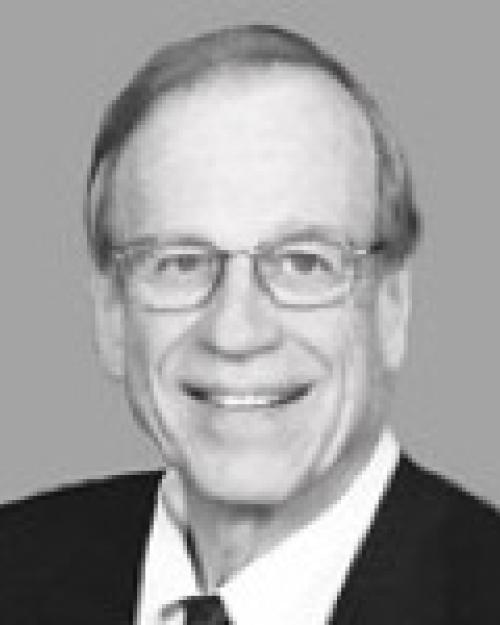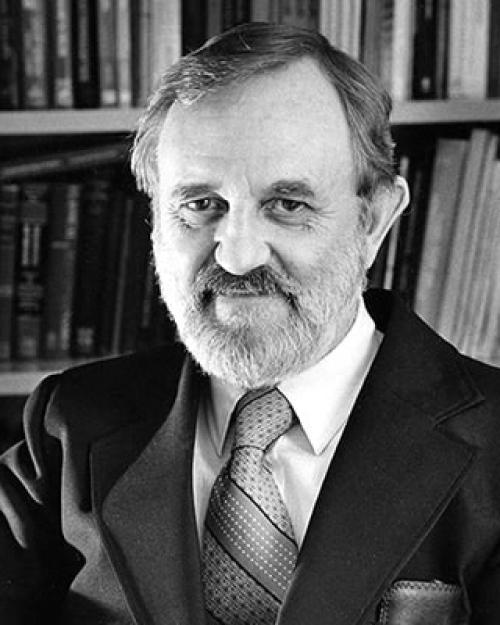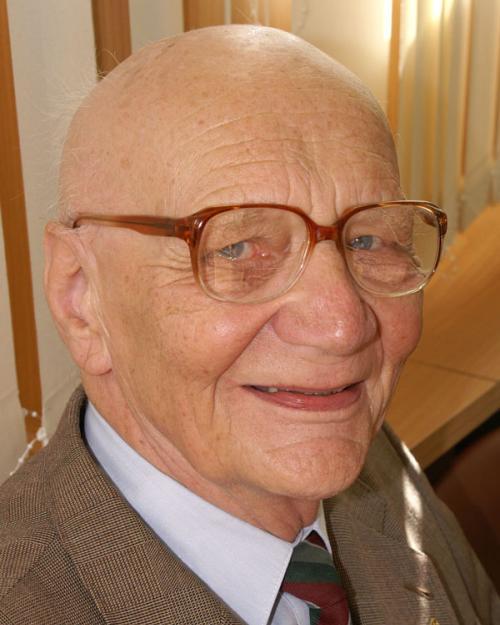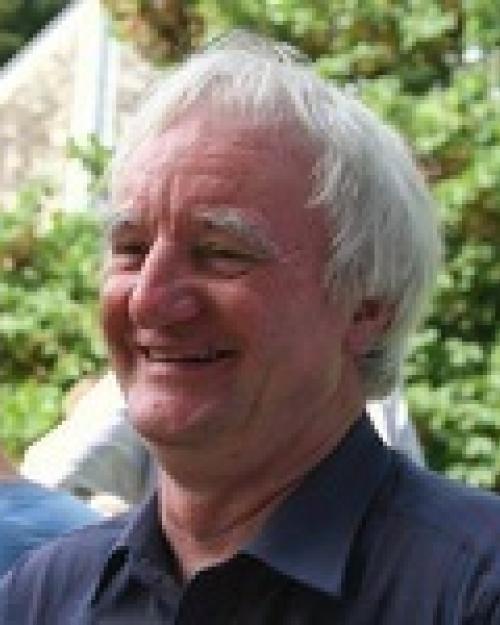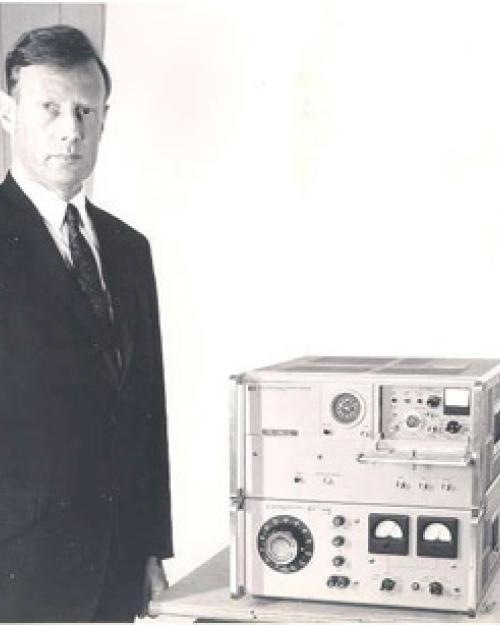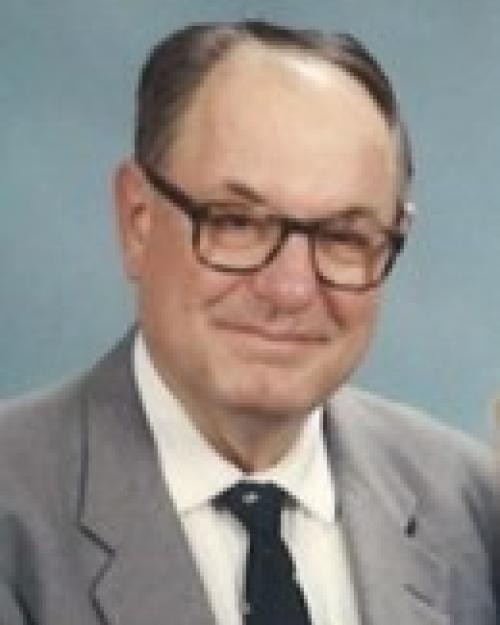-

Pierre Tournois
-Pierre Tournois passed away at his home in Cagnes-sur-mer (France) on March 6th 2017. Pierre is a worldwide recognized pioneer in the field of signal processing, surface acoustic waves (SAW) and optics. His innovations and discoveries had a significant impact on the scientific world: Gires-Tournois Interferometer, Maerfeld-Tournois wave, SAW dispersive delay line, devices for controlling and measuring the time shape of a laser pulse. Furthermore, under his dynamic and enthusiastic management, a large spectrum of innovations were promoted: adaptive antenna for sonars and radars, development of an IRM system, and of course, many new ideas in SAW, signal processing and ultra-fast optics. Pierre was born in Paris on March 26th 1936. He graduated from the ”Ecole Supérieure d’Optique” Paris in 1959. He probably fell into a “signal processing bath” at this place since for the whole duration of his career he developed devices, either digital or analog, in SAW or in optics, for pulse shaping sonar, radar or laser signals. He started his career at the Central Research Laboratory of Thomson CSF. He was immediately noticed by publishing in 1964 the idea of what is known today as the Gires-Tournois Interferometer, shortly after the first experimental demonstration of a pulsed laser. In 1966, he joined the very new sonar department of Thomson CSF in Cagnes (near Nice). There, he was in charge of creating an R&D group for the sonar activity. He organized 2 groups, one in digital technology and the second in analog. Both groups were very successful: the digital group is still famous for their work in adaptive antennas, and the second for their studies in SAW: large timebandwidth dispersive delay lines, SAW convolvers and the Maerfeld Tournois wave. In 1974, he was called to head the sonar department and acted as a pure manager up to 1982. Most of the time, the career of scientists proceeds irreversibly towards management. They start their career as brilliant scientists and as they become older they move to managerial positions. From 1982 to the end, Pierre followed the exact opposite path, from operational manager to technical director to scientist: in 1982, he became technical director (and vice president) of CGR, a subsidiary of Thomson CSF devoted to Medical Imaging (1982-1987). His strong action led to the design of the first MRI system of this company. Then he became the vice president of the Aeronautics Branch of Thomson-CSF, in charge of Research and Development 1988-1999. At that time, acting as a part-time scientist, he renewed his interest for the compression of laser pulses, for which the Gires-Tournois interferometer had been a pioneering invention. Compression had become a crucial problem with the advent of femtosecond pulsed lasers and amplifiers. After introducing several new concepts such as grism compressors, he searched for the Grail of an optically simple and electronically tunable device and found it with acousto-optic interactions. The new device, which is known in the world as the “Dazzler”, its commercial name, rapidly became a workhorse in the ultrafast laser community.
In 1999, he leaved Thales to co-found Fastlite, a small start-up, based on his inventions. Fastlite has evolved into a world leader in ultrafast pulse shaping and characterization of laser signals. The list and dates of prestigious awards he has received bears witness of his remarkable journey from scientist to manager and back. 1971 – BLONDEL’s medal 1973 – Grand Prix de l’Electronique Général FERRIE 2005 – David SARNOFF Award 2006 – Grand Prix des Ingénieurs de l’Année (Engineer of the Year) 2009 – Grand Prix Léon BRILLOUIN de la Société Française d’Optique (French Optical Society grand prize) He is a founding member of the French Academy of Technologies. Pierre is survived by his wife, Jeanne (Nanou), his daughter, Catherine, and his son Pascal who is pursuing his father’s legacy at the head of Fastlite.
Ted Janssen
-August 13, 1936 – September 29, 2017 On Friday, September 29, 2017, emeritus Professor T.W.J.M. (Ted) Janssen passed away at the age of 81 years. Ted Janssen was appointed associate professor at Radboud University in 1972, extra- ordinary professor in Utrecht in 1993 and full professor of theoretical physics at Radboud University in 1994. With the latter appointment he has strongly contributed to shaping the new group of Theoretical Condensed Matter, part of the Research Institute for Molecules and Materials (IMM) of the Faculty of Science. Ted obtained his PhD degree in 1968 from Nijmegen on ’Crystallographic Groups in Space and Time’ as first PhD student of prof. Aloysio Janner, with whom he subsequently collaborated very fruitfully during his whole career. During that career he also had many guest professorships, such as in Leuven, Dijon, Lausanne, Paris, Nagoya and Sendai. Together with Aloysio Janner he was one of the founders of the higher dimensional superspace approach in crystal structure analysis for the description of quasiperiodic crystals and modulated structures. For this work he received in 1988 the Aminoff prize of the Royal Swedish Academy of Science (with P.M. de Wolff and A.G.M. Janner) and in 2004 the Ewald prize of the International Union of Crystallography (with Janner), the most prestigious prizes in crystallography. These achievements were merit of his unique talent, combining a deep knowledge of physics with a rigorous mathematical approach. Their theoretical description of the structure and symmetry of incommensurate crystals using higher dimensional superspace groups also included the quasi- crystals that were discovered in 1982 by Schechtman, who received the Chemistry Nobel prize for this in 2011. The Swedish Academy of Sciences explicitly mentioned their work at this occasion. With his two famous papers “Crystallography of quasi-crystals” (T. Janssen, Acta Cryst. A42, 261-271, 1986) and “Aperiodic crystals: a contradictio in terminis?” (T. Janssen, Phys. Rep. 168, 55-113, 1988) Ted made a major mathematical contribution to this field. However, apart from being an excellent mathematical physicist, Ted was known as a very modest and pleasant colleague and friend. Already from his early years Ted also developed a deep appreciation for literature and music, in addition to visual arts, ballet and architecture. The enjoyment of the arts was essential to him, he called it vital components of life. He started playing the piano, harpsichord and cello in his early twenties, which brought him great joy during his whole life. Ted’s work on crystallographic symmetry was a beautiful combination of his passion for art as well as mathematics. Ted has also actively contributed to education with many beautiful courses of quantum mechanics and mathematical physics and with his great talent in explaining complex problems in simple words to students as well as colleagues. With his research he has strengthened the international scientific reputation of physics in Nijmegen, for which the university is very grateful. He will be missed. Theo Rasing, Radboud University

David Owen Cosgrove
-Professor David Owen Cosgrove, a pioneer in the clinical applications of ultrasound technologies, passed away on Tuesday the 16th of May 2017, at St. Raphael’s Hospice, North Cheam, London, after a short battle with cancer. Professor Cosgrove was born in Nairobi, Kenya in 1938. He obtained a BA in physiology from Oxford (1961) and subsequently qualified in medicine from St George’s Hospital Medical School in London. In 1977, after working in a number of hospitals in London and Nairobi, he became a consultant in Nuclear Medicine and Ultrasound in the Royal Marsden Hospital in Sutton. In 1993 David moved to the Hammersmith Hospital, which later became a part of the Imperial College School of Medicine, and was awarded a personal chair as Professor of Clinical Ultrasound. David officially retired in 2004, became an Emeritus Professor at Imperial College as well as a Senior Research Investigator at King’s College Hospital, and remained extremely active in the field. The ensuing list of honours and accomplishments in David’s successful career are extensive, suffice to say that David’s contributions were immense. David published more than 200 peer reviewed research articles and 30 teaching books/book chapters over his career. He held honorary memberships in many national and regional ultrasound societies and was one of the world’s most sought after invited speakers at international conferences, including the 2012 IEEE International Ultrasonics Symposium (IUS) where, as an invited clinical keynote speaker, he presented insights into the clinical needs for new ultrasound technologies. David had a tremendous curiosity and possessed an in-depth understanding of the physics and engineering of ultrasound. In this regard, he dedicated himself throughout his professional career to driving clinical applications of new ultrasound technologies, as well as linking ultrasound engineers and physicists with clinicians to address problems of real clinical need. He was at the forefront of clinical advances in radiological ultrasound technologies, including microbubble contrast-enhanced ultrasound and ultrasound elastography. He was a vice president and founding member of the International Contrast Ultrasound Society (ICUS), advisor to NICE and various grant giving authorities, and a member of many editorial boards of journals and expert working groups. He was closely involved in the two key and highly interdisciplinary international conferences on Contrast Enhanced Ultrasound; he co-organised the European Symposium on Ultrasound Contrast Imaging held annually in Rotterdam, and was an invited faculty speaker for the Bubble Conference held annually in Chicago for many years. He was also an active and highly valued contributor to the weekly engineering and physics ultrasound group meetings held jointly between Imperial College London and King’s College London. Another particularly important contribution, which continued throughout his career and beyond his retirement, was his role in advising industry. With his unique insights in both clinical needs and ultrasound physics and engineering, his advice for product improvement was invaluable, and in return he was able to work with the very latest and novel products for clinical evaluation and research. Even in his very early days in The Royal Marsden Hospital he advised on the development of one of the early commercial phased array abdominal ultrasound scanners by EMI, a company which also developed the x-ray CT scanner from the Nobel Prize winning invention that Godfrey Hounsfield had made while working there. Through his diplomacy and integrity he was able to engage simultaneously with many companies to continuously improve technologies for real clinical needs and ultimately to improve patient care. David’s collaboration with the Acuson company in the 80s and 90s provides one notable example of his contributions. David was the first person in Europe to be approached by the company to evaluate the Acuson 128 system, the first high-resolution, computer-controlled ultrasound system, and to advise on its suitability for Europe. David was excited about the great improvement in image quality and immediately identified several new clinical applications. David also gave clear, concise feedback on many problems with the system. Thus began a multi-year collaboration and friendship during which he gave valuable information about clinical opportunities which led to further advances in the system. For instance, he was an early advocate for ultrasound breast imaging and motivated the development of new transducers and specialized color Doppler software for the breast. When the Sequoia ultrasound system was under development, Acuson chose David as their international “Guru” to guide the development process for Europe and to evaluate advanced applications. David began influencing and testing the system years before its commercial release. In the early days of contrast enhanced ultrasound, David raised concerns about motion artefacts associated with the pulse-inversion method. His advice motivated the development of Acuson’s novel contrast imaging technology which was considered a great technical advance for imaging contrast agents. David was generous with his keen advice for everyone who worked to advance diagnostic ultrasound. A giant of the medical ultrasound world has passed away. He was unique in so many ways and will be an inspiration to generations of ultrasound practitioners, physicists and engineers across the world. He was truly one of a kind in everything he did and in every way that he was. David will be dearly missed. By: Jeffrey Bamber, Mengxing Tang, Robert Eckersley, Sam Maslak and Lu Maslak Acknowledgement:
We would like to thank Professor Steve Feinstein, Mrs Linda Feinstein, and Professor Nico de Jong for their help. Parts of the text are reprinted from a tribute published by the British Medical Ultrasound Society with their kind permission.
Fred Hickernell
-Frederick Slocum Hickernell, 84, of Phoenix, AZ died Tuesday, July 5, 2016, at home. He is survived by his wife, Thresa Kerr Hickernell, to whom he was married for 62 years. Dr. Hickernell is also survived by a daughter, Diana H. Dean, three sons, Frederick J. Hickernell, Robert K. Hickernell, and Thomas S. Hickernell, and seven grandchildren. Dr. Hickernell was a Major in the Air Force, in which he served as a meteorologist in the Korean War in Hawaii, Okinawa and Michigan. He received the Dan Noble award from Motorola, where he worked for over 38 years. He served in multiple organizations, including the IEEE, United Way, and First Baptist Church of Phoenix. His Memorial Service was held at 2:00 PM on Sunday, August 7, 2016, at Living Streams Church, 7000 N. Central, Phoenix 85020. Contributions may be made to International Ministries, P. O Box 851, Valley Forge, PA 19482-0851 or https://ieeefoundation.org/fredhickernell. Visit hansenmortuary.com for condolences. The above is an edited version of an obituary published in The Arizona Republic on July 17, 2016 Fred Hickernell served as a weather officer in the US Air Force, and in the theoretical group of Goodyear Aerospace. In 1960 he joined Motorola, working on microwave ferrite materials and devices; the elastic and piezoelectric properties of III-V and II-VI compounds and their bulk-acoustic mode applications; the development of SAW components; and the investigation and application of piezoelectric films to enhance the performance of SAW and BAW acoustical and optical microelectronic devices. He served as a Motorola Science Advisory Board Associate, and was honored as a Dan Noble Fellow of Motorola, retiring in 1998. He held teaching positions in the Math Department at Arizona State U, in the Physics Department at the U of Arizona, as an Adjunct Professor at the Optical Sciences Center of the U of Arizona in Tucson, and Courtesy Professor at the University of Central Florida, in Orlando. Fred has over 100 publications and has 14 patents in the area of microwave acoustics. Fred received the IEEE Phoenix Section Achievement Award in 1969. He was elected to the Administrative Committee of the IEEE Ultrasonics, Ferroelectrics, and Frequency Control (UFFC) Society in 1974 and was society Newsletter Editor from 1977 to 1999. He was a General Co-Chair of the 1977 Ultrasonics Symposium held in Phoenix and General Chairman of the 1992 Ultrasonics Symposium held in Tucson. In 1993 he initiated the formation of a Phoenix Chapter of the UFFC Society, and served as the representative for the UFFC Society for eight years. He was a Guest Editor for the May 1995 special issue on “Thin Films for Acoustoelectronics” of the UFFC Transactions. He received the IEEE UFFC Society Achievement Award in 1995, an IEEE Third Millennium Medal in 2001 and the UFFC Distinguished Service Award in 2004. Dr. Hickernell was president of the UFFC Society for the years 2000-2001. He has served on the administrative committee of the UFFC for 30 years, Senior Past President, Fellows Committee Chairman, and Chairman of the Historical Committee. Dr. Hickernell was a Life Fellow of the IEEE. Selected Publications since 2004 F. S. Hickernell, “41 Degree lithium niobate: A study of harmonics,” 2010 IEEE International Ultrasonics Symposium, San Diego, CA, 2010, pp. 1685-1687. F. S. Hickernell, “Discerning the piezoelectric quality of CdS and ZnO crystals and films from etch properties,” 2008 17th IEEE International Symposium on the Applications of Ferroelectrics, Santa Re, NM, USA, 2008, pp. 1-2. F. S. Hickernell, “The characterization of permanent acoustic bonding agents,” 2008 IEEE International Frequency Control Symposium, Honolulu, HI, 2008, pp. 191-194.
T. S. Hickernell and F. S. Hickernell, “P6H-9 Discerning the Quality of ZnO Films from Their Etch Properties,” 2007 IEEE Ultrasonics Symposium Proceedings, New York, NY, 2007, pp. 2602-2605. F. S. Hickernell, “P3G-1 The Evaluation of Nonpermanent Acoustic Bonding Materials Incorporating Micron Size Particles,” 2007 IEEE Ultrasonics Symposium Proceedings, New York, NY, 2007, pp. 1858-1861. F. S. Hickernell, “P3L-2 The Evaluation of Nonpermanent Acoustic Bonding Agents,” 2006 IEEE Ultrasonics Symposium, Vancouver, BC, 2006, pp. 2254-2256. F. S. Hickernell, “Evaluating Optical Contact Bonds Using Thin-Film ZnO Transducers,” 2006 IEEE International Frequency Control Symposium and Exposition, Miami, FL, 2006, pp. 338-342. F. S. Hickernell, “Evaluating ZnO thin film transducers by optical contact bonding of glass blocks,” IEEE Ultrasonics Symposium, 2005., 2005, pp. 325-328. F. S. Hickernell, “The piezoelectric semiconductor and acoustoelectronic device development in the sixties,” in IEEE Transactions on Ultrasonics, Ferroelectrics, and Frequency Control, vol. 52, no. 5, pp. 737-745, May 2005. F. S. Hickernell, “Shear horizontal BG surface acoustic waves on piezoelectrics: a historical note,” in IEEE Transactions on Ultrasonics, Ferroelectrics, and Frequency Control, vol. 52, no. 5, pp. 809-811, May 2005.
Y. V. Gulyaev and F. S. Hickernell, “Acoustoelectronics: history, present state, and new ideas for a new era,” IEEE Ultrasonics Symposium, 2004, 2004, pp. 182-190 Vol.1.
Lewis T. Claiborne
-Born on September 17, 1935 in Holly Grove, Arkansas, USA, to Sylvia and Taylor Claiborne, passed away on November 23, 2016 at the age of 81 years, in Dallas, Texas, USA. Lewis is survived by his wife Margaret Mulvey Claiborne, his sons Taylor and Mark Claiborne, and his stepchildren Michael, Charlie, and Mignon Mulvey. Lewis received a Bachelor of Science degree in 1957 after only three years with a double major in Physics and Math from Baylor University. He continued his education at Brown University, having won the Marston Fellowship his senior year at Baylor. He completed his PhD in physics in 1961. After getting his degree he started a long career at Texas Instruments working there for twenty-seven years, beginning in 1962 and retiring from the company in 1989. While an employee at TI, Lewis served as Branch Manager, Research Manager, and finally the Director of Strategic Technology Resources for the Corporate Research and Development group. He was heavily involved in many projects, including a neural network program and helped with projects that led to a class of devices referred to as “nanoelectronics”. He established an effort for the evaluation of alternative techniques for A/D converters in 1981, a spatial light modulator program that was funded by DARPA for early versions of High Definition TV displays. Lewis then worked for Loral Vought Systems (formerly LTV Aerospace and Defense) starting in 1990 until 2001, at which point the company was part of Lockheed-Martin. At LTV, he served as Senior Consulting Engineer and Director of Research, and worked on several Sector and Corporate IR Integrated Program Teams. After retiring from LTV, he joined RF-SAW, where he worked until 2011. During his long career, he was also a member of the IEEE as well as the American Institute of Physics. He served as President of the IEEE Group on Sonics and Ultrasonics in 1976, Chairman of Program Committee for the 1972 IEEE Ultrasonics Symposium, and was a lecturer for the IEEE Outstanding Lecture Series in 1974-75. Lewis pursued many interests. He was an Instrument Rated Pilot (ASEL), active member in the church, and a long-time student of Japanese, German, and French. None of his interests were as strong as his love of music. He was an active member of the church choir (both at Spring Valley UMC and Northway Christian) and played clarinet and saxophone for years in the Town North Concert Band, and several jazz bands. He also enjoyed performing in singing groups and writing music. The memorial service will be held on Saturday, December 10, 2016 at 2pm at Northway Christian Church, followed by a reception. In lieu of flowers, memorial donations may be given to the Music Ministry at Northway Christian Church. The family of Lewis Taylor Claiborne wishes to thank the large community of friends and family from Northway Christian Church and Spring Valley United Methodist Church for their support. Published in Dallas Morning News on Dec. 4, 2016 Lew Claiborne was an early contributor to the development of Surface Acoustic Wave technology, and more recently, published on SAW RFID. He had a number of publications on programmable SAW filters, analog filtering and frequency control in the 1970’s. His publications included: L. T. Claiborne, “Currently Practical Acoustic Surface Wave Devices,” 1975 IEEE-MTT-S International Microwave Symposium, Palo Alton, CA, 1975, pp. 350-352. C. S. Hartmann and L. T. Claiborne, “Fundamental Limitations on Reading Range of Passive IC-Based RFID and SAW-Based RFID,” 2007 IEEE International Conference on RFID, Grapevine, TX, 2007, pp. 41-48. R. M. Hays, W. R. Shreve, D. T. Bell, L. T. Claiborne and C. S. Hartmann, “Surface wave transform adaptable processor system,” 1975 Ultrasonics Symposium, Los Angeles, CA, USA, 1975, pp. 363-370. C. R. Hewes, L. T. Claiborne, C. S. Hartmann and D. D. Buss, “Filtering with Analog CCDs and SWDs,” 30th Annual Symposium on Frequency Control, Atlantic City, NJ, USA, 1976, pp. 123-128. H. G. Vollers and L. T. Claiborne, “RF Oscillator Control Utilizing Surface Wave Delay Lines,” 28th Annual Symposium on Frequency Control, Atlantic City, NJ, USA, 1974, pp. 256-259.
E. J. Staples and L. T. Claiborne, “A Review of Device Technology for Programmable Surface-Wave Filters,” in IEEE Transactions on Sonics and Ultrasonics, vol. 20, no. 2, pp. 197-205, April 1973. W. S. Jones, C. S. Hartmann and L. T. Claiborne, “Evaluation of Digitally Coded Acoustic Surface-Wave Matched Filters,” in IEEE Transactions on Sonics and Ultrasonics, vol. 18, no. 1, pp. 21-27, Jan. 1971. L. T. Claiborne, “A Survey of Current SAW Device Capabilities,” 29th Annual Symposium on Frequency Control, Atlantic City, NJ, USA, 1975, pp. 135-138.
L. T. Claiborne, E. J. Staples and J. P. Mize, “Surface-wave interaction with the MOSFET,” 1970 International Electron Devices Meeting, 1970, pp. 84-86. doi: 10.1109/IEDM.1970.188275
M. G. Holland and L. T. Claiborne, “Practical surface acoustic wave devices,” in Proceedings of the IEEE, vol. 62, no. 5, pp. 582-611, May 1974. R. B. Hemphill, R. N. Claytor and L. T. Claiborne, “Ultrasonic delay line with variable round-trip loss,” in Proceedings of the IEEE, vol. 56, no. 2, pp. 218-219, Feb. 1968.
C. Hartmann, P. Hartmann, P. Brown, J. Bellamy, L. Claiborne and W. Bonner, “Anti-collision methods for global SAW RFID tag systems,” IEEE Ultrasonics Symposium, 2004, 2004, pp. 805-808 Vol.2. E. J. Staples and L. T. Claiborne, “A Review of Device Technology for Programmable Surface-Wave Filters,” in IEEE Transactions on Microwave Theory and Techniques, vol. 21, no. 4, pp. 279-287, Apr 1973.
L. T. Claiborne and D. D. Buss, “Analog Signal Processing Using Surface Wave and Charge Transfer Devices,” S-MTT International Microwave Symposium Digest, Atlanta, Georgia, USA, 1974, pp. 185-185.
L. T. Claiborne, G. S. Kino and E. Stern, “Scanning the issue,” in Proceedings of the IEEE, vol. 64, no. 5, pp. 579-580, May 1976.
L. Eric Cross
-L. Eric Cross passed away peacefully on the 29th of December. He was an Evan Pugh Professor Emeritus of Electrical Engineering, Penn State, a member of the US National Academy of Engineering, and a founding member of the Penn State Materials Research Laboratory. He was a world-leader in the field of ferroelectrics from a fundamental perspective, as an inventor of new characterization techniques, and in materials applications. He was beloved for his intelligence, vision, wit and humanity, as well as the charm with which he shared his fascination with ferroelectrics and his newest ideas. He was also an excellent mentor, and many of his students and postdoctoral researchers went on to scientific leadership position themselves. He came to the field of ferroelectricity in its infancy, and this to the objection of his advisor A.F. Stoner, “Who referred to it as a trivial lattice phenomenon!” Stoner was famed for his contributions to magnetism. World War II interrupted Cross’s undergraduate education at Leeds University (UK). During the war, he worked for the British Admiralty on a program using high frequency direction finding to track German U-boats, which ultimately allowed convoys to cross the Atlantic unharmed. Just two weeks after his transfer to that assignment, the boat that Cross previously served on was sunk in Atlantic, with no survivors. Ever after, Prof. Cross thought of himself as a lucky man. He was very proud of his long association with the Department of Defense and particularly the U.S. Navy, which supported much of his work in the field of sonar undersea transducers. He and his colleagues made many other societal contributions such as the piezoelectric transducer used in almost all modern medical ultrasound machines. During his career, Professor Cross was honored by many professional organizations. He was a Fellow of the Materials Research Society, the American Physical Society, the Optical Society of America, the American Ceramics Society, and IEEE. In 1983, he was elected to the National Academy of Engineering for his contributions to the development of electroceramic, dielectric, and piezoelectric materials. He was also the 2010 recipient of the Von Hippel award of the Materials Research Society, its highest honor. Cross joined Penn State as a senior research associate in 1961, rose through the ranks, and in 1985, was named Evan Pugh Professor of Electrical Engineering; an Evan Pugh Professorship is the highest distinction that the University can bestow on a faculty member. He is the author or coauthor of more than 850 refereed papers; he held 20 patents, and published a comprehensive text book, “Domains in Ferroic Crystals and Thin Films”. At Penn State he mentored > 50 graduate students from across the world – including Prof. Yao Xi: the first Chinese Ph.D. (1982) educated in the US following the cultural revolution. He will be sadly missed by all that knew him and worked with him. He shared his ideas freely with everyone that he met at scientific conferences, from graduate students to senior leaders in the field. He and his family, (wife Priscilla (Cilla) – a reluctant but gracious member of the ferroelectrics community by osmosis, and children Peter, Matthew, Daniel, Rachel, and Elizabeth) opened their home to generations of students and colleagues. Very nice memories of the scholar, passion and personality of Professor Cross can be appreciated at http://ethw.org/Oral-History:L._Eric_Cross.

Jan Fousek
-After a long illness, Professor Jan Fousek passed away on September 4 2016. He was one of the most prominent researchers in the field of ferroelectricity within the last 50 years and certainly the best-known Czech representative of this field. Born in Příbram, Czechoslovakia, he graduated from the Faculty of Mathematics and Physics of the Charles University, Prague, in 1953 and became a Ph.D student in the newly established Department of Ferroelectrics of the Institute of Physics, Czechoslovak Academy of Sciences (CAS), under the supervision of Prof. J. Beneš. In 1958 he defended his Ph.D thesis on microwave dielectric properties of barium titanate. Shortly after he became the head of the Department of Ferroelectrics at the same institution – a position he kept until 1990. During his early career he organized and chaired the 1st International Meeting on Ferroelectricity (IMF-1), which took place in Prague in 1966. At that time his principal research concerned domain walls in classical ferroelectrics. This work culminated in his most cited paper on permissible ferroelectric domain walls connecting two mechanically compatible domains. From 1967 to 1968, he and his wife Anna (also a physicist in ferroelectricity) visited Prof. L. Eric Cross at Penn State University. During that time, his research revealed dielectric behaviour of gadolinium molybdate which initiated intense research on improper ferroelectrics that held a predominant role within the Department during the seventies. Professor Fousek was also involved in optical and electro-optical studies of ferroelectrics, including improper and pseudo-proper ferroelectrics and the related phase transitions. By the beginning of eighties, the research was extended to consider incommensurate ferroelectrics and phase transitions of modulated phases. After the Soviet occupation in 1968, travelling abroad in Czechoslovakia became extremely difficult, but thanks to Professor Fousek’s established contacts he and other colleagues at the CAS were able to make some scientific visits abroad. One important visit during this time was Professor Fousek’s stay at the ETH Zurich (Swiss Federal Institute of Technology) in 1977. Peter Günter at the ETH Zurich later invited Professor Fousek to return for several additional scientific visits. A new series of meetings also emerged: “European Conference on Applications of Polar Dielectrics” (ECAPD). The first ECAPD was held together with the “International Symposium on Applications of Ferroelectrics” (ISAF) in Zurich in 1988, chaired by P. Günter. Because international contacts were difficult to maintain in the seventies, Professor Fousek established regular bi-lateral meetings with Polish scientists, represented by Professor Bozena Hilczer, Institute of Molecular Physics, Polish Academy of Sciences, Poznan. Meeting have been held alternately between the two countries since 1979. In the eighties, Professor Fousek continued research on optical and electro-optical properties of various incommensurate systems, low-temperature ferroelectrics and ferroelectric liquid crystals. In collaboration with P. Günter’s team he also studied the photo-induced and photo-refractive effects in ferroelectrics. In 1994 Jan Fousek was promoted to Professor in the Technical University of Liberec (TUL) and joined the Department of Physics at the Faculty of Education TUL. He supervised several Ph.D. students, revived and stimulated the research in the field of piezoelectricity and ferroelectricity and initiated several successful grant applications for establishing a modern experimental infrastructure at TUL. Younger colleagues benefited from his international contacts and were able to initiate research stays abroad. He continued regular visits to Penn State University, where he began writing a book on domains, together with A. Tagantsev from EPFL Lausanne and E. Cross. The book “Domains in Ferroic Crystals and Thin Films” provides an impressive monography of about 800 pages and was published in 2010. This volume was his last and most prominent scientific achievement. He continued his appointment with TUL until his retirement in 2005, helped with the organization of the 7-th European Conference on Applications of Ferroelectric (ECAPD-7) at TUL in 2004 and the Conference on Piezoelectricity for End Users III (PIEZO2007), Liberec 2007. Professor Fousek’s death was felt world-wide throughout the scientific community even after his six-year, illness-imposed absence from research. Several international conferences will honour his memory with special sessions. He will be remembered as a founder of the Czech research on ferroelectrics and as the best-known Czech representative in this field. Jan Petzelt Institute of Physics CAS, Prague, Czech Republic

André Clairon
André Clairon was a physicist at LNE-SYRTE, Observatoire de Paris, who made profound and continuing contributions to Time and Frequency Metrology. His work was recognized by several awards including the Rabi award in 1996 and the EFTF award in 2003. He had a global approach to research showing the same interest for experiment and theory, for fundamental science, technology and applications. Beyond T&F, he worked in several other fields such as atom interferometry, laser cooling of atoms, and laser development. His most prominent achievement is probably the pioneering realization of high accuracy atomic fountain frequency standards. International Atomic Time is now defined by such standards with relative uncertainties in the low 10-16. André Clairon was a wonderful colleague and collaborator, characterized by relentless curiosity, outstanding creativity and hard and rigorous work, while being always kind and modest. Let’s continue to be inspired by him!

Gernot Winkler
-“An Expert on, and a Definer of, Time”
Gernot Maria Rudolph Winkler ran the Time Service Department of the U. S. Naval Observatory (USNO) for thirty years, from 1966 to 1996. One of his first actions as Director was to replace a crystal clock with a cesium atomic clock as the USNO’s Master Clock, thus transitioning the Naval Observatory to the atomic clock era. From then on, under his leadership, the Time Service Department and the USNO grew and prospered. Under his tenure, his primary goals were to build a Master Clock system second to none, and to disseminate its time to the nation and the world. As an administrator, he secured funding for development, kick-start purchases, and operational use of a variety of innovations, such as 5071 cesiums, masers, mercury stored-ion clocks, and Two Way Satellite Time Transfer (TWSTT). This was done not only by incorporating the latest atomic clocks as they were developed, but also by increasing the number of clocks and applying sophisticated statistical techniques and computer technology to produce the time scale. He introduced time transfer by taking portable atomic clocks back and forth between locations, and later pioneered in applying GPS for that same purpose. He oversaw the improvement of the observational methods and determination of Earth orientation parameters by development of the world’s largest photographic zenith tube, a 26 inch PZT, and use of connected element interferometry, satellite laser ranging, and Very Long Baseline Interferometry observations and correlator for Earth rotation studies. This growth led to the establishment of the Earth Orientation Department at the USNO. One of his most politically difficult achievements was to convince the Air Force that the USNO should be the source of and monitor of time for the GPS system, and he also supplied UTC(USNO), the USNO Master clock’s realization of Coordinated Universal Time (UTC), as the source of time for the Loran and Omega Navigational Systems. In 1971, a collaboration between the USNO and Dr. Hafele of the University of Colorado provided a direct test of the relativistic time dilations by flying an atomic clock ensemble around the world in easterly and westerly directions. Later, a collaboration with Carroll Alley of the University of Maryland confirmed the isotropy of the speed of light by using the Washington Cathedral as a station to reflect microwaves between the USNO and NASA Goddard. His familiarity with relativity enabled him to make significant contributions to GPS’s treatment of the subject. Early in his career he co-founded the Precise Time and Time Interval (PTTI) Systems and Application Meetings. Starting from a small group of government agencies in 1969, it grew to be one of the core forums where practical timekeeping knowledge can be shared and discussed. The complete proceedings through 2012 can be found on-line on http://tycho.usno.navy.mil/ptti. Starting with 2013, PTTI meetings have become part of the Institute of Navigation’s program, and now known as ION-PTTI. Gernot M. R. Winkler Dr. Winkler was also a leader in international organizations dealing with time. He served on numerous national and international boards and commissions. He led the International Consultative Committee for Radio communications (CCIR) activity in the definition of UTC with leap seconds in 1972, which established atomic time as the worldwide time standard. He also led International Astronomical Union (IAU) activities concerning the specifications of the determinations of time scales. To those in Time Service, Gernot was an inspiring leader in every way. A strong and supportive manager, aided by his “von-Braun” accent, he always encouraged his employees to do their best. One of his favorite techniques was to praise someone behind his back about something very specific, because he knew the word would get back to him/her. He would follow his employees’ progress, and would welcome them into his small, densely-packed but well-organized office to talk to them about it. As a role model Winkler, was an intellectual giant who was happy to share. He published at least 88 papers, covering all aspects of timekeeping from frequency standards to time transfer to statistics. Many learned timekeeping from his technical review articles, and very much enjoyed learning philosophy from his almost-as-technical essays on not just the nature of time but of such concepts as deism, determinism, realism, subjectivism, monism, and positivism. Some of these are available in the form of essays at his website http://gmrwinkler.net. His life before coming to the USNO Born in 1922, Gernot had an interest in astronomy from age 12, when he came across a book by German spaceflight pioneer Hermann Oberth. He was also influenced by the science fiction writer Jules Verne. As a youth he was a radio amateur proficient in Morse code, which enabled him to avoid front line duty when he was drafted, much against his will, to the German army. He spent seven years in the army, two of them as a prisoner of war in American custody in southern Italy. Returning to Austria in 1947, he immediately resumed his studies at the University of Graz. There his interests evolved toward the mathematical sciences, including geophysics, physics, and astronomy. His PhD. in 1952 was on the mathematical modeling of coupled electromagnetic cavities used to support the microwave engineering industry. He was also associated with the Astronomy Department’s Solar Observatory, Kanzelhoehe. Dr. Winkler came to the United States in 1956 and began work in the microwave resonance branch of the U. S. Army Signal Corps, Monmouth, NJ, where they were supporting work on the first atomic clocks, the Atomichron, for the National Radio Company. These devices had a stability of one part in 1011, and became the first commercially-produced frequency standards. He earned six patents for his personal contributions to maser and oscillator stabilization. He also worked on ionospheric radio transmission, organizing and participating in several expeditions to the Greenland ice cap, as well as Antarctica. Awards and Honors In 1970 he was elected a Fellow of the IEEE (Institute of Electrical and Electronic Engineers). In 1984 he was awarded the Presidential Rank Award for Meritorious Executive in the Senor Executive Service. In 1988 at the International Frequency Control Symposium, he was awarded the I.I. Rabi Award. In 1994, at the 26th Annual Precise Time and Time Interval (PTTI) Applications and Planning Meeting, he received the Distinguished Service Award. The award citations can be found at http://tycho.usno.navy.mil/ptti/1994papers/Vol%2026_00.pdf and here. Family Winkler was preceded in death by his beloved wife Renate Anna Franziska Winkler, née Strafella (Nov. 3, 1923 – March 31, 2014). He eulogized her at http://gmrwinkler.net/Memoriam.html. He is survived by his children Vic and Beatrice (Trixi) Winkler Summers. More Information The full transcript of Steven Dick’s interview with Dr. Winkler in 1989, undertaken as part of the U. S. Naval Observatory history, Sky and Ocean Joined(Cambridge, 2003), is available in the Observatory Library in Washington, D.C. Winkler’s award citations can be found at http://tycho.usno.navy.mil/ptti/1994papers/Vol%2026_00.pdf and here.
Thrygve Meeker
-Thrygve Meeker was born in 1929 in Pottstown, PA to the late: Thrygve H. and Mabel (MacIntire) Meeker. He was married to his loving wife Joan (Honce), for 61 years. In 1951 he received his B.S. degree in chemistry from Ursinus College and his M.S. and Ph.D. in physics and chemistry, in 1954 and 1956, from the University of Delaware. In 1955 he joined Bell Labs where he addressed many of the important practical issues in communications related ultrasonic technology. As a Manager he helped develop the most complex monolithic crystal filter ever put into manufacture and led the development of the SAW timing recovery filter for the transatlantic fiber cable. Dr. Meeker was a leader in revising the IEEE piezoelectricity standards and received the IEEE Centennial Medal, in 1984 for his lifetime professional support of ultrasonics. In 1985, he received the IEEE UFFC Sawyer Award “”For his contributions to the theory and design of piezoelectric quartz devices.” He had served as president of the IEEE Ultrasonics, Ferroelectrics, and Frequency Control Society in 1965-1966. He had published some of his technical contributions. A selection of his articles and patents are listed below. He also authored “Theory and Properties of Piezoelectric Resonators and Waves,” Chapter 2 of Volume 2, in Precision Frequency Control, Edited by Eduard A. Gerber and Arthur Ballato, Academic Press, Inc., 1985. Dr. Meeker was a member of the First Presbyterian Church of Allentown, Alpha Tau Omega Fraternity, the American Chemical Society and the American Physical Society. He was predeceased by his parents and siblings Marjorie Middeler, J. Theodore Meeker, and Lawrence A. Meeker. Survivors: Wife Joan, Children: Linda Young and husband David, Diane Bartels, Thrygve K. Meeker and wife Barbara. Grandchildren: Samuel Young and Benjamin Young. Siblings Maurice Meeker and Marilyn Jones. A selection of Thryg Meeker’s publications and patents (from Google Scholar): Clock recovery and retiming scheme with saw filter phase trimming to achieve desired system phase adjustment PC Davis, DC Farley, SH Kravitz, TR Meeker… – US Patent…, 1987 – Google Patents
A clock recovery and data retiming circuit is disclosed which utilizes a SAW filter to form the recovered clock signal. The phase shift of the received data signal associated with various attenuation and distortion effects of the communication channel is compensated for and …The aging of bulk acoustic wave resonators, filters and oscillators JR Vig, TR Meeker – … Control, 1991., Proceedings of the 45th …, 1991 – ieeexplore.ieee.org The aging of quartz crystal resonators, filters, and oscillators is reviewed, including the topics of: the impacts of aging, typical aging characteristics, aging specifications, aging mechanisms, temperature dependence of aging, frequency and overtone dependence of … Small ripple surface acoustic wave filter with low insertion loss TR Meeker, WS Tsay – US Patent 4,577,169, 1986 – Google Patents A surface acoustic wave (SAW) filter is disclosed which exhibits both low insertion loss and small ripple in the passband, requirements which were considered mutually exclusive in the prior art. In accordance with the present invention, apodized group-type recessed …Thickness mode piezoelectric transducers
TR Meeker – Ultrasonics, 1972 – Elsevier Abstract This paper is a tutorial review of the theory of the simple thickness mode piezoelectric transducer. The usual differential equations and constitutive relations are used to obtain general impedance equations for the transducer with arbitrary boundary …Determination of Elastic Constants of Isotropic Materials at Megacycle Frequencies
TR Meeker, AH Meitzler – The Journal of the Acoustical Society of …, 1961 – scitation.aip.org
The frequency dependence of the phase and group velocities for longitudinal and flexural waves in a plate provides the basis for several convenient methods of determining elastic constants. In these methods two independent elastic constants are determined in strip- …
Method and apparatus for bonding transducer elements DR Herriott, JS Jones, TR Mecker… – US Patent 3,453,166, 1969 – Google Patents … 0C. United States Patent 3,453,166 METHOD AND APPARATUS FOR BONDING TRANSDUCER ELEMENTS Donald R. Herriott, Morris Township, Morris County, NJ, and Joseph S. Jones, Emmaus, and Thrygve R. Meeker and Kurt Reznicek, Allentown, Pa., assignors to Bell …Prion protein detection
D Maureen, W HANSON, T MEEKER – US Patent App. 11/675,950, 2007 – Google Patents
An example embodiment of the invention includes a method of performing an assay comprising the steps of (1) providing a multimode waveguide;(2) fixing one or more fluidic cells to the multimode waveguide, wherein each of the one or more fluidic cells including … Grating diffraction instrument for measuring ultrasonic phase velocity in liquids
EP Papadakis, TR Meeker – Review of Scientific Instruments, 1982 – scitation.aip.org An instrument is described for the measurement of ultrasonic phase velocity in liquids. The principle of measurement is gratingdiffraction which diverts an incoming ultrasonic wave generated by a transmitting transducer and aims it at a receiving transducer. The …Pagination

